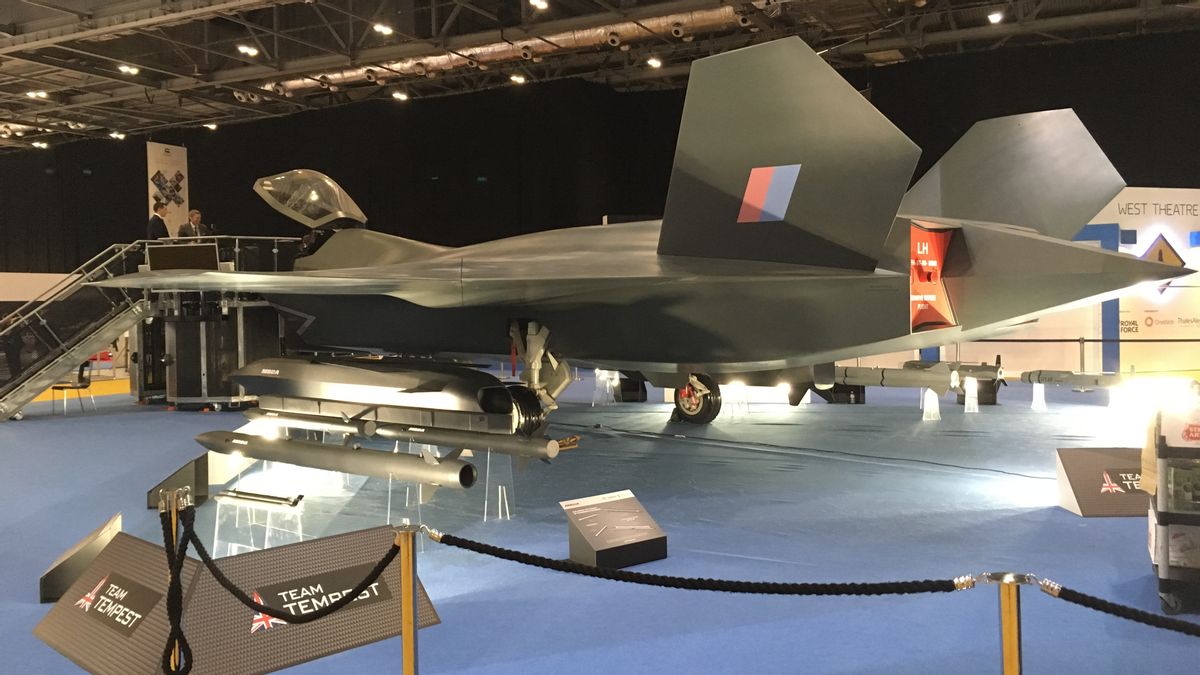JAKARTA - Japan, Britain, and Italy are combining next-generation fighter jet projects in a variational partnership that includes Europe and Asia, Tokyo's first defense collaboration with partners other than the United States since the Second World War.
The deal, reported by Reuters in July, aims to operate advanced frontline fighters by 2035 combining the UK-led Future Combat Air System project, also known as Tempest, with Japan's F-X program in a venture called the Global Combat Air Program (GCAP), the three countries said in a statement on Friday.
Against Russia's invasion of Ukraine and intensification of China's military activities around Japan and Taiwan, the agreement could help Japan fight the growing military power of its neighbor, giving Britain a greater role in security in the region that is the main driver of global economic growth.
"We are committed to upholding rules-based, free and open international order, which is more important than ever at a time when these principles are opposed, and threats and aggression are increasing," the third state said in a joint leader agreement.
Amid what it sees as deteriorating regional security, Japan this month will announce a military development plan that is expected to double defense spending, to about 2 percent of gross domestic product for five years.
British Prime Minister Rishi Sunak separately said his country needed to remain at the forefront of defense technology.
"That means we can keep the country safe from the new threats we face, it also adds billions of our economy and supports tens of thousands of jobs across the country," said PM Sunak, who visited an air force base in eastern England. Agree.
"This is also good for our international reputation," he continued.
Later, the UK's BAE Systems PLC, Mitsubishi Heavy Industries Japan and Leonardo Italia (LDOF.MI) will lead aircraft designs, which will have advanced digital capabilities in artificial intelligence and cyber warfare, according to Japan's Ministry of Defense.
European missile maker MBDA will also join the project, along with avionic manufacturer Mitsubishi Electric Corp, Rolls-Royce PLC, IHI Corp and Avio Aero will work on the machine, the policy added.
However, the three countries have not completed some details on how the project will resume, including the division of the work and where developments will be carried out.
The UK also wants Japan to improve its way of granting security permits to contractors working on aircraft, said a source familiar with the discussions.
Interestingly, other countries could join the project, the UK said, adding warplanes, which would replace Typhoon fighters and complement the F-35 Lightning fleet, would be compatible with warplanes flown by other North Atlantic Treaty Organization (NATO) partners.
Meanwhile, BAE Chief Executive Charles Woodburn told reporters no other partners needed.
"Three countries are everything we need to advance this program very successfully," he said, adding he was confident the partners would draw up more details on the collaboration in the coming months.
Confirmation confirmed the plan comes days after companies in France, Germany and Spain secured the next phase of rival initiatives to build next-generation fighters that could operate from 2040.
Asked about possible UK, Japan, and Italy projects to join Europe's future rivals, Woodburn said it was a possibility.
"I'm not putting aside one or another. In the end, this is a political decision," he said.
Separately, the United States, which has pledged to defend a third country through its separation in Europe NATO and separate security pacts with Japan, also welcomed the mutual-Japan agreement.
"The United States supports Japan's security and defense cooperation with joint allies and partners, including with Britain and Italy," the US Department of Defense said in a joint statement with Japan's Ministry of Defense.
In fact, Japan initially considered building up the next fighter with the help of US defense Lockheed Martin, who had proposed a plane combining the F-22 fuselage with the flight system of the F-35 fighter.
The English, Chinese, Japanese, Arabic, and French versions are automatically generated by the AI. So there may still be inaccuracies in translating, please always see Indonesian as our main language. (system supported by DigitalSiber.id)













